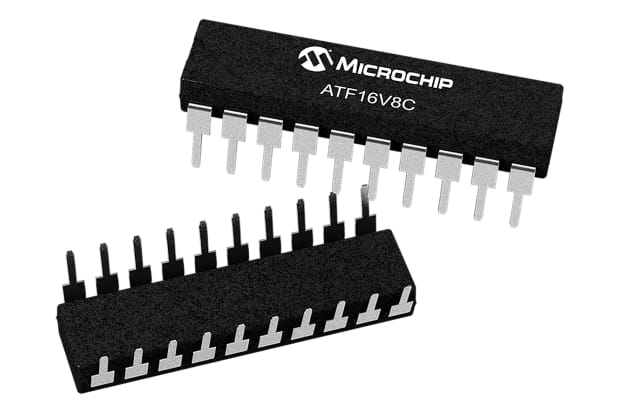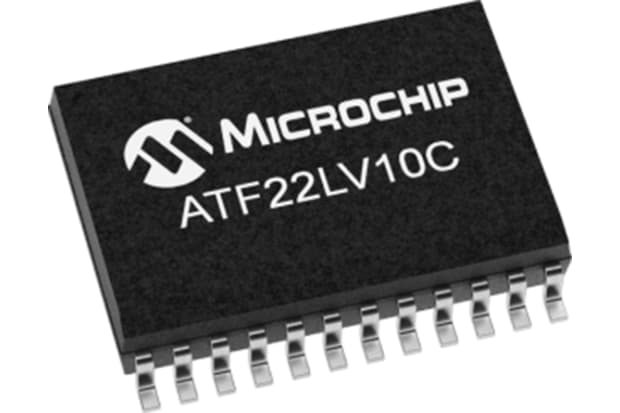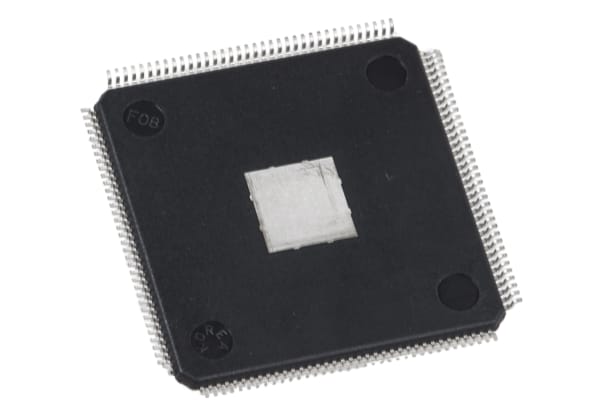- Published 14 Jun 2023
- Last Modified 29 Aug 2023
- 5 min
What are Simple Programmable Logic Devices?
Simple programmable logic devices utilise logic gates and programming to perform custom functions.

As technology advances, the need for software and devices becomes more customisable and versatile, and this is no different for the components in the electronic device. In this guide, we will explain how simple programmable logic devices work, their applications, and the different programmable logic devices available.
How Do SPLD ICs Work?
When thinking of simple programmable logic devices, we need to understand what programmable logic devices are. Logic devices are logic gates that take inputs and determine a binary output, based on that gate’s rule. There are many logic gates rules such as AND, NOR, OR and many more, and these logic gates are the decision-makers of a circuit. However, when changing the input information in a circuit, this usually would have to be completed as a physical task. This is where programmable logic devices differ, as these are devices that can be wiped and reprogrammed through software, rather than changing hardware. To define these even further, SPLDs are the least complicated forms of programmable logic devices.
In the case of an SPLD, these programmable devices will contain simple logic gates like AND or OR gates, and flip-flop components. They are then programmed using software and Hardware Description Language (HDL) and/or VHSIC (Very High-Speed Integrated Circuit) Hardware Description Language (VHDL). VDHL and HDL work similarly to coding language and instruct the logic devices how to perform. Coding language examples for SPLDs include CUPL, PALASM and ABEL.
Because SPLDs are a mixture of memory and logic devices, they retain their memory through the use of silicon anti-fuses, which is silicon within the circuit that has been modified to hold the memory. In the case of more volatile or simpler forms of memory, the input will have to be programmed every time, and this can be done automatically by an additional circuit.
The final type of SPLD available is Programmable Read-Only Memory or PROM.
SPLD Uses

SPLDs have a wide range of uses across many platforms and industries. Due to it being a simpler form of programmable logic device, SPLDs are often used as a component in simpler forms of memory, such as Read Only Memory or ROM.
SPLDs also play an important function in data communication, device interfacing, data display and signalling communications. They are also present in signalling devices. Because of their high functionality, SPLDs are found in all sorts of basic household devices and are components in computers.
Types of SPLD
PAL
There are several types of SPLDs depending on use or function, the first of these being Programmable Array Logic or PAL. PAL utilises the AND and OR gates, the AND gate being a programmable gate whilst the OR gate is a fixed gate. The structure of PAL is that information will travel through the programmable AND gate, into the fixed OR gate and then produce an output. The advantages of PAL are that it is secure and reliable due to its diverse functionality and its low power consumption, compared to other SPLDs. This also makes PAL a budget-friendly option.
GAL
The next type of SPLD is generic array logic or GAL. PAL and GAL SPLDs have the same structure or architecture, that is a programmable AND gate and a fixed OR gate. However, unlike PAL, GAL AND gates can be wiped and reprogrammed, and the output of a GAL SPLD can also be programmed, allowing you to change the logic of the circuit based on need. GAL is extremely versatile due to its programmability.
PLA
Programmable Logic Array or PLA is the third option of SPLD available. This logic device has AND and OR gates both of which are programmable, unlike GAL or PAL. This SPLD can be used for decoding and data tasks. PLA is not manufactured with a specific function or purpose, meaning that they are very customisable depending on the task required.
PROM
The final type of SPLD is Programmable Read Only Memory or PROM. This is a memory that is read-only but does not have data inputted at the point of manufacture. This means that users can input their data into the device, depending on the task required. However, once this data is inputted, it can’t be amended or altered.

Fixed Logic Devices
We have talked about a range of SPLDs, but all logic devices fall into two categories: fixed logic devices and programmable logic devices. The main difference between the two is their architecture. A fixed logic device is one which can’t be re-programmed using software. That is, once the logic device has been set up, it is fixed and permanent. They are designed to perform a set task, and once manufactured, they cannot be altered. Because of this, it takes longer to build a fixed logic gate, as they have to go through a design and trial process.
Programmable Logic Devices
Unlike Fixed Logic Devices, Programmable logic devices are able to be reprogrammed after manufacture and purpose. PLDs fall into three main categories: SPLD, Complex Programmable Logic Devices (CPLD) and Field Programmable Gate Array (FPGA).
Whilst SPLDs are designed to perform simple tasks, CPLDs are designed for more complex functions. However, their circuits are not as complex as FPGA, so CPLDs are somewhat the middle ground for PLDs. A CPLD architecture is that of blocks of PAL or PAL functions and sitting between those blocks is a Global Interconnection Matrix or GIM. The GIM between the blocks is programmed in order to make use of the logic blocks surrounding it. CPLDs are commonly found in portable digital devices, as their power consumption is relatively low.
The final type of PLD is FPGA. These are different to the previous SPLDs mentioned, as they are composed of logic blocks, as opposed to a simple AND and OR logic pathway. Like the previous SPLDs, FPGA is very customisable depending on the task, allowing an engineer to reprogram the device multiple times without physical hardware change. FPGAs are commonly used in a wide range of industries including commercial, automotive and industrial. They can be found in cars, electronic devices and industrial automation. Whilst they are a more expensive option due to them consuming more power, they are the best option if you need a logic device that can perform a more complex task.
Further Reading
Related links
- Introduction to Programmable Logic Devices
- Microchip ATF22V10C-10SU 10 Macro Cells ISP, 5ns
- Microchip ATF16V8C-7JU 18 I/O 5ns EECMOS 20-Pin
- SPLDs
- Microchip ATF22V10C-15PU 10 Macro Cells 最低83.3MHz
- Microchip ATF22V10CQ-15JU 10 Macro Cells 最低83.3MHz
- Microchip ATF22V10CQZ-20PU 10 Macro Cells 最低50MHz
- Microchip ATF22V10C-15JU 10 Macro Cells 最低83.3MHz

